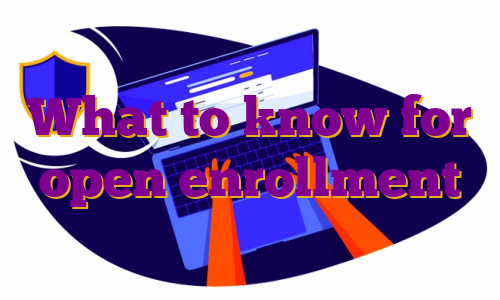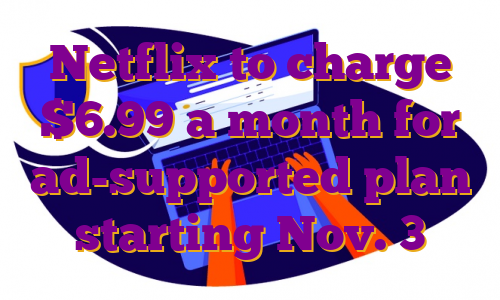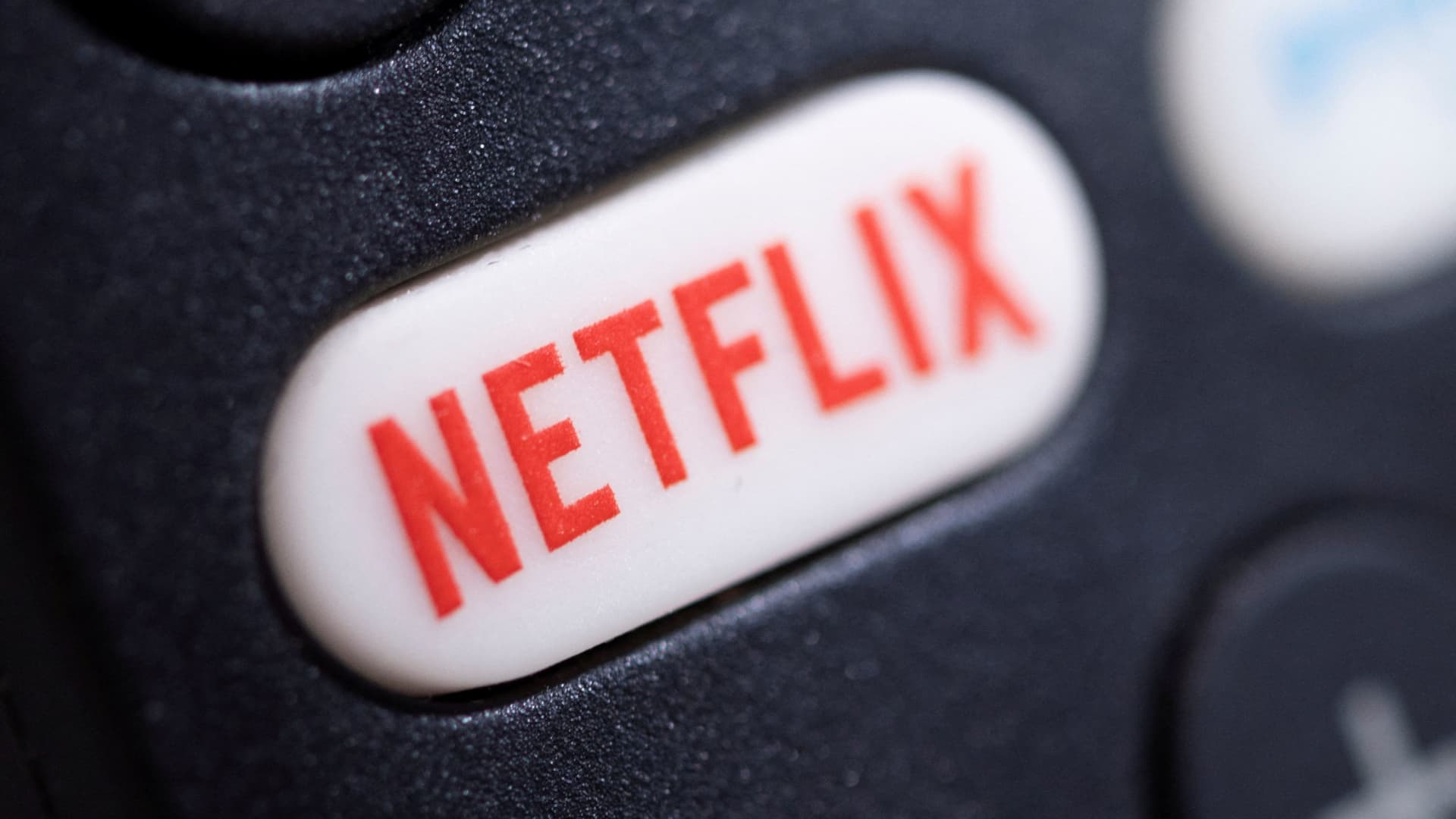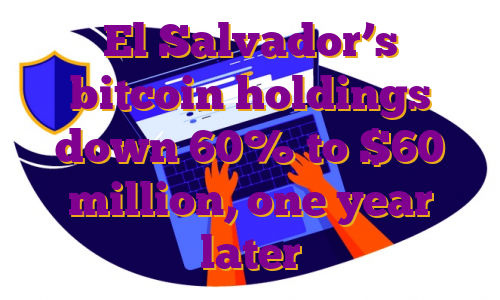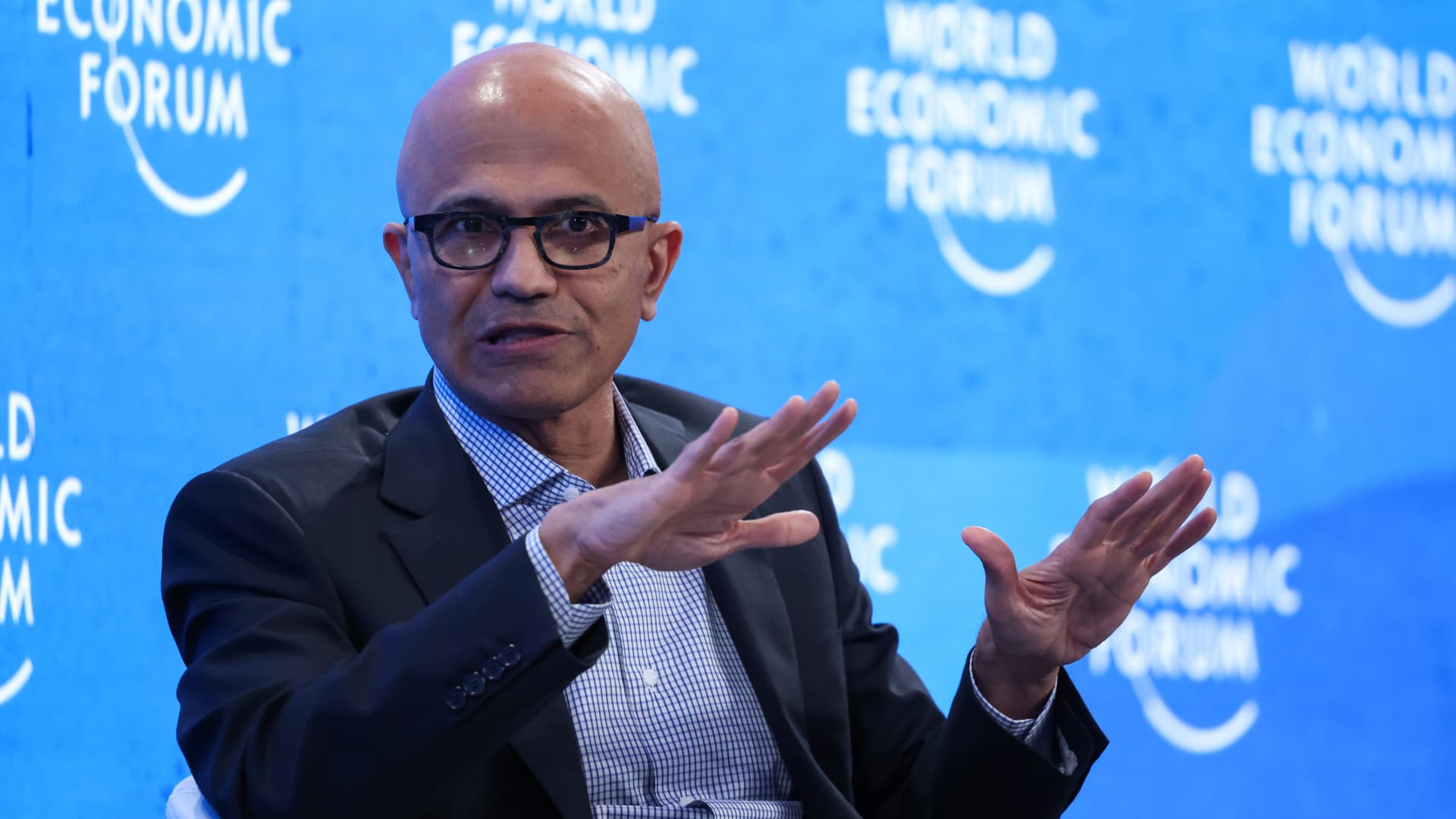Mike Mergen | Bloomberg | Getty ImagesIf you’re a Medicare beneficiary, now’s the time to evaluate your prescription drug coverage for 2023.In addition to checking during Medicare’s annual fall open enrollment whether there’s a more cost-effective plan for you, some legislative changes take effect next year that may reduce how much you pay out of pocket for your coverage.”It’s a quality of life issue,” said Elizabeth Gavino, founder of Lewin & Gavino and an independent broker and general agent for Medicare plans. “Saving money on medications means there’s more Social Security money left for other necessities in life.”More from Year-End PlanningHere’s a look at more coverage on what to do finance-wise as the end of the year approaches:Medicare’s enrollment period opened Oct. 15 and runs through Dec. 7. Beneficiaries can make changes to their coverage during this period.Prescription drugs are generally delivered through Medicare Part D. Of the estimated 64.5 million people enrolled in Medicare, about 50 million have such coverage, through either a standalone Part D plan or an Advantage Plan — both of which are offered by private insurance companies. Advantage Plans deliver Part A (hospital coverage) and Part B (outpatient care) and usually Part D.Here are some changes you may notice next year, as well as some tips for what to look for when evaluating your options for 2023.Insulin costs will be cappedSome changes to prescription drug coverage, enacted as part of the Inflation Reduction Act, take effect next year. This include a monthly $35 cap on cost-sharing for insulin under Part D, which will start on Jan. 1. (Some plans may already offer a $35 cap.)Part D deductibles — which vary from plan to plan but cannot be more than $505 in 2023, up from $480 this year — also won’t apply to the covered insulin product. For beneficiaries who take insulin through a traditional pump (which falls under Part B), the benefit starts July 1.”Some of my clients had to choose between buying food and buying insulin [or] rationing the insulin to make it last longer, thereby taking much less than the prescribed amount,” Gavino said. “This was dangerous, and now they can use the right amount they need to live.”100% coverage for recommended vaccinesAdditionally, there will no longer be any cost-sharing for recommended inoculations under Part D beginning Jan. 1, including for the shingles vaccine. “In the past, many people paid quite a bit for the shingles vaccine because of Part D’s rather high deductible,” said Danielle Roberts, co-founder of insurance firm Boomer Benefits.”The vaccine usually was a covered medication, but because they hadn’t yet satisfied the deductible, they spent quite a bit for it,” Roberts said. Other provisions that are intended to reduce Part D spending take effect in later years. This includes eliminating an existing 5% coinsurance in the so-called catastrophic phase of coverage (2024) and capping beneficiaries’ annual out-of-pocket Part D spending at $2,000 (2025). Currently, there is no out-of-pocket limit, regardless of whether you get your coverage as a standalone Part D option or through an Advantage Plan.Medicare also will be able to start negotiating the price of some drugs beginning in 2026.Your plan could change its list of covered drugsAs for choosing your 2023 coverage: While you aren’t required to take any action during open enrollment — your current coverage generally would continue into next year — plans often change their list of covered drugs and the price of them.Additionally, each plan assigns individual drugs to different tiers, with the first tier generally being the least expensive and the fifth costing the most. From year to year, various drugs may move from one tier to another in any given plan — which makes it important to check where your prescriptions fall for 2023.Also be sure to look at the pharmacies included in the plan. Some are “preferred” — meaning your medicine will be less expensive there than at a “standard” pharmacy.”The pharmacy you use can really impact the price of what you pay for your prescriptions,” said Ari Parker, a senior advisor at Chapter, a Medicare advisory firm.Beneficiaries with higher income pay more for coverageThe average premium for standard Part D coverage next year is projected to be $31.50, compared to $32.08 in 2022, according to the Center for Medicare & Medicaid Services. However, be aware that if your income is above certain limits, you will be subject to so-called income related adjustment amounts, or IRMAAs, which are in addition to any premium you pay (see chart below). Part B also comes with those extra amounts.Your tax return from 2021 is generally what would be used to determine whether you’re subject to those surcharges in 2023. You can ask for a reconsideration if your income has dropped since then.Getting prescription drug coverage through Medicare is optional. However, if you fail to sign up when you first qualify for coverage at age 65 and change your mind later, you’ll face a life-lasting penalty unless you meet certain exclusions (i.e., you receive acceptable coverage through an employer).The penalty is 1% of the national base premium for each month you didn’t have Part D or creditable coverage and should have.Be aware that while you can change your Advantage Plan early next year (Jan. 1 to March 31) if you discover it’s not a good fit, that’s not the case for standalone Part D plans.”Unless a special circumstance applies, you won’t be able to change it,” Parker said.Also, sometimes you can find medicines at a cheaper cost than through your plan, such as with a free drug-discount card. However, if you go this route instead of through your insurance, your plan won’t count the medicine’s cost and your copay toward your deductible or other calculations it uses to determine your share. .
Other provisions that are intended to reduce Part D spending take effect in later years. This includes eliminating an existing 5% coinsurance in the so-called catastrophic phase of coverage (2024) and capping beneficiaries’ annual out-of-pocket Part D spending at $2,000 (2025). Currently, there is no out-of-pocket limit, regardless of whether you get your coverage as a standalone Part D option or through an Advantage Plan.Medicare also will be able to start negotiating the price of some drugs beginning in 2026.Your plan could change its list of covered drugsAs for choosing your 2023 coverage: While you aren’t required to take any action during open enrollment — your current coverage generally would continue into next year — plans often change their list of covered drugs and the price of them.Additionally, each plan assigns individual drugs to different tiers, with the first tier generally being the least expensive and the fifth costing the most. From year to year, various drugs may move from one tier to another in any given plan — which makes it important to check where your prescriptions fall for 2023.Also be sure to look at the pharmacies included in the plan. Some are “preferred” — meaning your medicine will be less expensive there than at a “standard” pharmacy.”The pharmacy you use can really impact the price of what you pay for your prescriptions,” said Ari Parker, a senior advisor at Chapter, a Medicare advisory firm.Beneficiaries with higher income pay more for coverageThe average premium for standard Part D coverage next year is projected to be $31.50, compared to $32.08 in 2022, according to the Center for Medicare & Medicaid Services. However, be aware that if your income is above certain limits, you will be subject to so-called income related adjustment amounts, or IRMAAs, which are in addition to any premium you pay (see chart below). Part B also comes with those extra amounts.Your tax return from 2021 is generally what would be used to determine whether you’re subject to those surcharges in 2023. You can ask for a reconsideration if your income has dropped since then.Getting prescription drug coverage through Medicare is optional. However, if you fail to sign up when you first qualify for coverage at age 65 and change your mind later, you’ll face a life-lasting penalty unless you meet certain exclusions (i.e., you receive acceptable coverage through an employer).The penalty is 1% of the national base premium for each month you didn’t have Part D or creditable coverage and should have.Be aware that while you can change your Advantage Plan early next year (Jan. 1 to March 31) if you discover it’s not a good fit, that’s not the case for standalone Part D plans.”Unless a special circumstance applies, you won’t be able to change it,” Parker said.Also, sometimes you can find medicines at a cheaper cost than through your plan, such as with a free drug-discount card. However, if you go this route instead of through your insurance, your plan won’t count the medicine’s cost and your copay toward your deductible or other calculations it uses to determine your share. .
Netflix to charge $6.99 a month for ad-supported plan starting Nov. 3
The Netflix logo is seen on a TV remote controller, in this illustration taken January 20, 2022.Dado Ruvic | ReutersNetflix will charge $6.99 per month for its new advertising-supported tier, which the company will roll out in the U.S. on Nov. 3.Netflix’s “Basic with ads” tier will include an average of four to five minutes of commercials each hour and won’t give users the ability to download movies and TV series. A limited number of TV series and movies will initially be unavailable due to licensing restrictions.Ads will be 15 or 30 seconds in length and will play before and during Netflix’s content. Companies will have the ability to prevent ads from appearing on content they deem unsavory or unsuitable. To help advertisers understand its reach, ratings company Nielsen will use its standard digital audience measurement, Digital Ad Ratings, in the U.S. beginning in 2023.Netflix is launching its first less-expensive plan with commercials after years of rejecting the concept. The move comes as subscriber growth has plateaued in recent quarters. Netflix lost subscribers in the first two quarters this year and expects to add just 1 million customers in the third quarter. The company has about 221 million subscribers globally, which makes it the largest worldwide streaming service.Netflix will announce its third-quarter earnings after the market closes Tuesday and plans to unveil new subscriber and revenue forecasts, according to Chief Operating Officer Greg Peters. Netflix is partnering with Microsoft for its advertising-supported service. The streaming company will have hundreds of advertisers at launch and has nearly sold out its inventory, the company said in a media conference call.Initially there will be no advertising within kids programming and new movies. Older films may have mid-roll advertising.Pricing below DisneyNetflix’s $6.99 per month pricing is less expensive than ad-supported Disney+ and Hulu, which will both be $7.99 per month when Disney+’s ad tier launches in December. HBO Max with ads is $9.99 per month.Netflix priced the service so that any customer who switches to the ad-supported service from the ad-free basic plan will have a “neutral to positive” effect on the company’s revenue, according to Peters.That suggests Netflix will get at least $3 a month per user in advertising revenue.”We want to offer consumers choice and figure out what the best offering is for them,” Peters said during the conference call.Video resolution for Netflix’s advertising tier will be 720p rather than 1080p, the quality of Netflix’s standard plan that costs $15.49 per month. The company’s basic plan without advertising is $9.99 per month and also has 720p resolution.The advertising tier will initially be available in Canada and Mexico on Nov. 1, followed by Australia, Brazil, Canada, France, Germany, Italy, Japan, Korea, Mexico, the U.K. and the United States on Nov. 3. Spain will launch on Nov. 10.The price of streamingNetflix
$6.99 − basic with ads
$9.99 − basic without ads
$15.49 − standard without adsHBO Max
$9.99 − with ads
$14.99 − without ads Hulu
$7.99 − with ads
$14.99 − without ads Paramount+
$4.99 − with ads
$9.99 − without adsPeacock
$4.99 − premium with ads
$9.99 − without adsDisney+
$7.99 − with ads*
$10.99 − without ads**Available starting in DecemberWATCH: How Netflix lost its edge in the streaming wars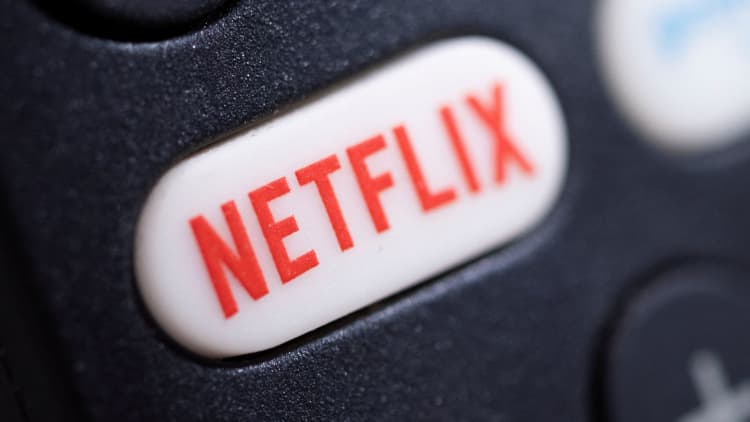 .
.
El Salvador’s bitcoin holdings down 60% to $60 million, one year later
Salvadoran President, Nayib Bukele speaks during an event in May 2021. El Salvador become the first country to adopt bitcoin as legal tender in June.Camilo Freedman | SOPA Images | LightRocket | Getty ImagesIt has been more than a year since El Salvador made history by becoming the first country to make bitcoin legal tender, and so far, 37-year-old resident Edgardo Acevedo has found the nationwide crypto experiment to be relatively anticlimactic.”I don’t think anything has changed, except that the country is more recognized than before, but the economic life of Salvadorans remains the same or worse than a few years ago,” said Acevedo, a development engineer working in the capital city of San Salvador.Acevedo, who is also known by the pseudonym Ishi Kawa, tells CNBC that while bitcoin has become a topic of conversation, adoption remains low, and he has personally found that there are very few businesses that accept the world’s biggest cryptocurrency — and even fewer Salvadorans who wish to pay in the digital token.”What has improved is the issue of violence and crime, but economically, I can say that nothing has changed,” he said.It has been a rocky time, with the project not living up to the grand promises made by the country’s popular and outspoken president Nayib Bukele.The use of bitcoin in El Salvador appears to be low, as the currency has lost about 60% of its value since the experiment started and the country still faces plummeting economic growth and a high deficit. El Salvador’s debt-to-GDP ratio — a key metric used to compare what a country owes with what it generates — is set to hit nearly 87% this year, stoking fears that the nation isn’t equipped to settle its loan obligations.Data from Bloomberg Economics shows that El Salvador tops its ranking of emerging market countries that are vulnerable to a debt default. Even as it retires some of its outstanding debts, the country’s domestic and multilateral loan obligations pose a real threat, in part because the world’s biggest lenders aren’t too keen to give cash to a country betting its future on one of the most volatile assets on the planet.Pair these economic woes with a renewed war on gang violence and the country is barreling toward uncertainty.”The government claims the developments as a success, but most local commentators and international watchers are underwhelmed,” Rachel Ziemba, founder of Ziemba Insights, told CNBC.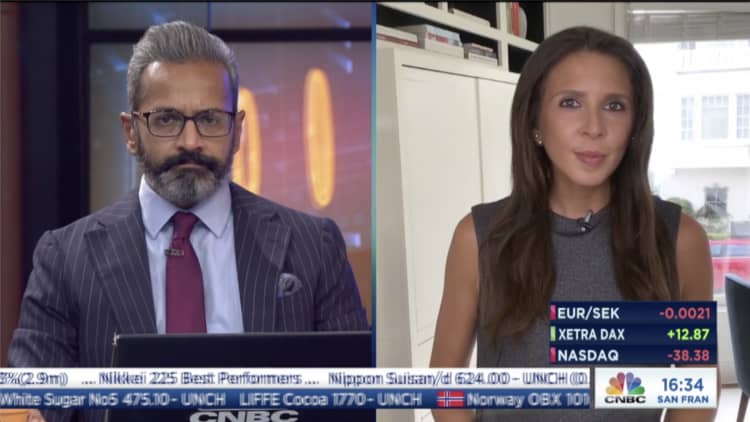 Bitcoin uptake appears lowWhen El Salvador’s Bitcoin Law came into effect Sept. 7, 2021, Jaime Garcia was hopeful that it would fix a few big problems with the way that Salvadorans send, receive and spend money.As part of the law, prices are now sometimes listed in bitcoin, tax contributions can be paid with the digital currency, and exchanges in bitcoin will not be subject to capital gains tax. But crucially, Bukele promoted the law as a way to expand financial inclusion — which is no small thing for a country where approximately 70% of the population does not have access to traditional financial services, according to the Bitcoin Law.To help facilitate national adoption, El Salvador launched a virtual wallet called “chivo” (Salvadoran slang for “cool”) that offers no-fee transactions, allows for quick cross-border payments, and requires only a mobile phone plus an internet connection. It aimed to bring users onboard quickly, both to scale bitcoin adoption and to offer a convenient onramp for those who had never been a part of the banking system.Bukele tweeted in January that about 60% of the population, or 4 million people, used the chivo app, and more Salvadorans have chivo wallets than traditional bank accounts, according to a Sept. 20 research note from Deutsche Bank. Still, only 64.6% of the country has access to a mobile phone with internet, that note says.But a report published in April by the U.S. National Bureau of Economic Research showed that only 20% of those who downloaded the wallet continued to use it after spending the $30 bonus. The research was based upon a “nationally representative survey” involving 1,800 households.Garcia, who lives in the Canadian province of Saskatchewan, fled El Salvador when he was 11 after rebels bombed his house, but he keeps in close touch with family and friends who stayed behind — and he sometimes sends money back home, too.”There are pockets where bitcoin is popular, like in El Zonte, but it’s clear that adoption is not massive,” said Garcia.”Big chains like McDonald’s, Starbucks, and most merchants at a mall will accept bitcoin — but are people using it? Not too much locally,” he said. “It’s mostly tourists using bitcoin.”A survey by the El Salvador-based El Instituto de Opinion Publica, a public opinion think tank, found that 7 in 10 Salvadorans do not think the Bitcoin Law has benefited their family economy.Another survey by the institute found that 76 out of 100 small and medium-size enterprises in El Salvador do not accept bitcoin payments.”Bitcoin’s first year in effect has transcended from a commercial expectation to an irrelevant topic for traders,” said Laura Andrade, director of El Salvador’s Universidad Centroamericana, according to a CNBC translation of her Spanish-language comments.Andrade said many large corporations are still advertising that they’re taking payments in bitcoin but are making excuses to not accept the cryptocurrency including saying their system does not work or the bitcoin wallet is out of service.”The foregoing is evidence that this cryptocurrency, in reality, never had penetration in national commerce,” Andrade said.”There seems to be evidence that most people used it primarily to get the free money from the government but have not used it on an ongoing basis given volatility and fees,” Ziemba said.Meanwhile, those who did use the government’s crypto wallet reportedly had technical problems with the app. Other Salvadorans fell prey to schemes involving identity theft, in which hackers used their national ID number to open a chivo e-wallet, in order to claim the free $30 worth of bitcoin offered by the government as an incentive to join.A survey published in March by the Chamber of Commerce and Industry of El Salvador found that 86% of businesses have never made a sale in bitcoin, and only 20% of businesses take bitcoin, despite the Law’s mandate that all merchants accept the cryptocurrency.”They gave people the wallets, they forced businesses to accept them, but essentially, in my opinion, it’s a big nothing burger,” said Frank Muci, a policy fellow at the London School of Economics, who has experience advising governments in Latin America. “Nobody really uses the app to pay in bitcoin. People that do use it, mostly use it for dollars.”The experiment also involved building a nationwide infrastructure of bitcoin ATMs, but they’re too far away for many people to use.Another hope for the chivo wallet was that it would help save hundreds of millions of dollars in remittance fees. Remittances, or money sent home by migrants, account for more than 20% of El Salvador’s gross domestic product, and some households receive over 60% of their income from this source alone. Incumbent services can charge 10% or more in fees for those international transfers, which can sometimes take days to arrive and require a physical pickup.But in 2022, recent data shows that only 1.6% of remittances were sent to El Salvador via digital wallets. According to the Deutsche Bank report from September, part of the reason bitcoin transfers haven’t caught on has to do with the complications of buying and selling bitcoin for dollars. The report notes that “people who send and receive remittances frequently use informal brokers to convert local currency to and from bitcoin” and extremely volatile prices make buying and selling the cryptocurrency a complex task requiring technical know-how.”This is a new money, a new way of doing things for a population that is very comfortable with dollars. This is a population that is largely unbanked and would rather deal with hard cash that they can see and feel,” Garcia said.Miles Suter, the crypto product lead at Cash App, told CNBC on a panel at the Messari Mainnet conference in New York that the government’s 90-day rollout of the chivo wallet and nationwide adoption of bitcoin was “rushed” and that there are still a lot of problems.”You shouldn’t mandate the acceptance of a specific currency,” said Suter, who spent six months in El Salvador in the runup to the passing of the Bitcoin Law. However, Suter added that the media perception is worse than how things are actually going on the ground.”I saw and experienced lives being changed by having access to a new emerging monetary standard,” he said.
Bitcoin uptake appears lowWhen El Salvador’s Bitcoin Law came into effect Sept. 7, 2021, Jaime Garcia was hopeful that it would fix a few big problems with the way that Salvadorans send, receive and spend money.As part of the law, prices are now sometimes listed in bitcoin, tax contributions can be paid with the digital currency, and exchanges in bitcoin will not be subject to capital gains tax. But crucially, Bukele promoted the law as a way to expand financial inclusion — which is no small thing for a country where approximately 70% of the population does not have access to traditional financial services, according to the Bitcoin Law.To help facilitate national adoption, El Salvador launched a virtual wallet called “chivo” (Salvadoran slang for “cool”) that offers no-fee transactions, allows for quick cross-border payments, and requires only a mobile phone plus an internet connection. It aimed to bring users onboard quickly, both to scale bitcoin adoption and to offer a convenient onramp for those who had never been a part of the banking system.Bukele tweeted in January that about 60% of the population, or 4 million people, used the chivo app, and more Salvadorans have chivo wallets than traditional bank accounts, according to a Sept. 20 research note from Deutsche Bank. Still, only 64.6% of the country has access to a mobile phone with internet, that note says.But a report published in April by the U.S. National Bureau of Economic Research showed that only 20% of those who downloaded the wallet continued to use it after spending the $30 bonus. The research was based upon a “nationally representative survey” involving 1,800 households.Garcia, who lives in the Canadian province of Saskatchewan, fled El Salvador when he was 11 after rebels bombed his house, but he keeps in close touch with family and friends who stayed behind — and he sometimes sends money back home, too.”There are pockets where bitcoin is popular, like in El Zonte, but it’s clear that adoption is not massive,” said Garcia.”Big chains like McDonald’s, Starbucks, and most merchants at a mall will accept bitcoin — but are people using it? Not too much locally,” he said. “It’s mostly tourists using bitcoin.”A survey by the El Salvador-based El Instituto de Opinion Publica, a public opinion think tank, found that 7 in 10 Salvadorans do not think the Bitcoin Law has benefited their family economy.Another survey by the institute found that 76 out of 100 small and medium-size enterprises in El Salvador do not accept bitcoin payments.”Bitcoin’s first year in effect has transcended from a commercial expectation to an irrelevant topic for traders,” said Laura Andrade, director of El Salvador’s Universidad Centroamericana, according to a CNBC translation of her Spanish-language comments.Andrade said many large corporations are still advertising that they’re taking payments in bitcoin but are making excuses to not accept the cryptocurrency including saying their system does not work or the bitcoin wallet is out of service.”The foregoing is evidence that this cryptocurrency, in reality, never had penetration in national commerce,” Andrade said.”There seems to be evidence that most people used it primarily to get the free money from the government but have not used it on an ongoing basis given volatility and fees,” Ziemba said.Meanwhile, those who did use the government’s crypto wallet reportedly had technical problems with the app. Other Salvadorans fell prey to schemes involving identity theft, in which hackers used their national ID number to open a chivo e-wallet, in order to claim the free $30 worth of bitcoin offered by the government as an incentive to join.A survey published in March by the Chamber of Commerce and Industry of El Salvador found that 86% of businesses have never made a sale in bitcoin, and only 20% of businesses take bitcoin, despite the Law’s mandate that all merchants accept the cryptocurrency.”They gave people the wallets, they forced businesses to accept them, but essentially, in my opinion, it’s a big nothing burger,” said Frank Muci, a policy fellow at the London School of Economics, who has experience advising governments in Latin America. “Nobody really uses the app to pay in bitcoin. People that do use it, mostly use it for dollars.”The experiment also involved building a nationwide infrastructure of bitcoin ATMs, but they’re too far away for many people to use.Another hope for the chivo wallet was that it would help save hundreds of millions of dollars in remittance fees. Remittances, or money sent home by migrants, account for more than 20% of El Salvador’s gross domestic product, and some households receive over 60% of their income from this source alone. Incumbent services can charge 10% or more in fees for those international transfers, which can sometimes take days to arrive and require a physical pickup.But in 2022, recent data shows that only 1.6% of remittances were sent to El Salvador via digital wallets. According to the Deutsche Bank report from September, part of the reason bitcoin transfers haven’t caught on has to do with the complications of buying and selling bitcoin for dollars. The report notes that “people who send and receive remittances frequently use informal brokers to convert local currency to and from bitcoin” and extremely volatile prices make buying and selling the cryptocurrency a complex task requiring technical know-how.”This is a new money, a new way of doing things for a population that is very comfortable with dollars. This is a population that is largely unbanked and would rather deal with hard cash that they can see and feel,” Garcia said.Miles Suter, the crypto product lead at Cash App, told CNBC on a panel at the Messari Mainnet conference in New York that the government’s 90-day rollout of the chivo wallet and nationwide adoption of bitcoin was “rushed” and that there are still a lot of problems.”You shouldn’t mandate the acceptance of a specific currency,” said Suter, who spent six months in El Salvador in the runup to the passing of the Bitcoin Law. However, Suter added that the media perception is worse than how things are actually going on the ground.”I saw and experienced lives being changed by having access to a new emerging monetary standard,” he said.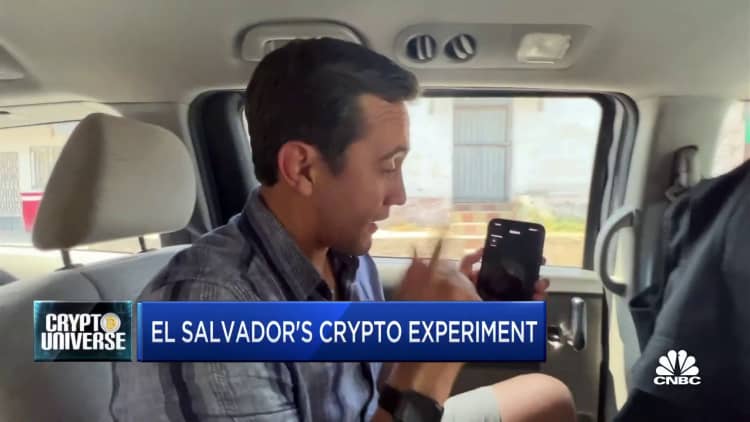 ‘Sleepwalking into a debt default’Well before Bukele wagered that bitcoin would bandage over longstanding economic vulnerabilities, the country was in a lot of trouble.The World Bank projects that the Salvadoran economy will grow by 2.9% this year and 1.9% in 2023, down from 10.7% in 2021. But that growth itself was a bounce-back from an 8.6% contraction in 2020.Its debt-to-GDP ratio is almost 90%, and its debt is expensive at around 5% per year versus 1.5% in the U.S. The country also has a massive deficit — with no plans to reduce it, whether through tax hikes or by substantially cutting spending.In a research note from JPMorgan, analysts warn that El Salvador’s eurobonds have entered “distressed territory” in the last year, and S&P Global data reportedly shows that the cost to insure against a sovereign debt default is hitting multiyear highs.Both JPMorgan and the International Monetary Fund warn the country is on an unsustainable path, with gross financing needs set to surpass 15% of GDP from 2022 forward — and public debt on track to hit 96% of GDP by 2026 under current policies.El Salvador faces a heavy mix of multilateral and domestic debts, including imminent debt repayment deadlines in the billions of dollars, such as an $800 million eurobond that matures in January.”The domestic debt is very large, relatively short duration and needs to be rolled over frequently,” said Muci, who previously worked at the Growth Lab at the Harvard Kennedy School of Government.El Salvador has been trying since early 2021 to secure a $1.3 billion loan from the IMF — an effort that appears to have soured over Bukele’s refusal to heed the organization’s advice to ditch bitcoin as legal tender.Rating agencies, including Fitch, have knocked down El Salvador’s credit score, citing the uncertainty of the country’s financial future given the adoption of bitcoin as legal tender. That means that it’s now even more expensive for Bukele to borrow much-needed cash.Beyond the fact that global lenders don’t want to throw money at a country that is spending millions in tax dollars on a cryptocurrency whose price is prone to extreme volatility, the IMF’s largest shareholder, the U.S., is targeting Salvadoran officials as part of wider international sanctions against “corrupt actors.”The president’s efforts to consolidate power have also driven up this risk premium for global lenders.Bukele’s New Ideas party has control over the country’s Legislative Assembly. In 2021, the new assembly came under fire after it ousted the attorney general and top judges. The move prompted the U.S. Agency for International Development to pull aid from El Salvador’s national police and a public information institute and reroute the funds to civil society groups.Additionally, El Salvador can’t print cash to shore up its finances. El Salvador ditched its local currency, the colon, in favor of the U.S. dollar. Only the Federal Reserve can print more dollars. Meanwhile, its other national currency, bitcoin, is revered for the fact that it, too, is impossible to mint out of thin air.”One of the big issues has been the fact that the bitcoin gimmick has distracted from the fiscal and economic challenges of the country and made it more difficult for the country to access IFI lending and preferential terms,” Ziemba said.Ziemba added that there have been some swaps with major crypto firms that allowed the country to raise cash to pay off the debt due this year, and perhaps early next year, but the long-term debt sustainability remains a challenge.”They’ve spooked the bejesus out of financial markets and the IMF,” said Muci, who tells CNBC that nobody wants to lend money to Bukele unless it’s at “eye-gouging rates” of 20% to 25%.”The country is sleepwalking into a debt default,” Muci said.
‘Sleepwalking into a debt default’Well before Bukele wagered that bitcoin would bandage over longstanding economic vulnerabilities, the country was in a lot of trouble.The World Bank projects that the Salvadoran economy will grow by 2.9% this year and 1.9% in 2023, down from 10.7% in 2021. But that growth itself was a bounce-back from an 8.6% contraction in 2020.Its debt-to-GDP ratio is almost 90%, and its debt is expensive at around 5% per year versus 1.5% in the U.S. The country also has a massive deficit — with no plans to reduce it, whether through tax hikes or by substantially cutting spending.In a research note from JPMorgan, analysts warn that El Salvador’s eurobonds have entered “distressed territory” in the last year, and S&P Global data reportedly shows that the cost to insure against a sovereign debt default is hitting multiyear highs.Both JPMorgan and the International Monetary Fund warn the country is on an unsustainable path, with gross financing needs set to surpass 15% of GDP from 2022 forward — and public debt on track to hit 96% of GDP by 2026 under current policies.El Salvador faces a heavy mix of multilateral and domestic debts, including imminent debt repayment deadlines in the billions of dollars, such as an $800 million eurobond that matures in January.”The domestic debt is very large, relatively short duration and needs to be rolled over frequently,” said Muci, who previously worked at the Growth Lab at the Harvard Kennedy School of Government.El Salvador has been trying since early 2021 to secure a $1.3 billion loan from the IMF — an effort that appears to have soured over Bukele’s refusal to heed the organization’s advice to ditch bitcoin as legal tender.Rating agencies, including Fitch, have knocked down El Salvador’s credit score, citing the uncertainty of the country’s financial future given the adoption of bitcoin as legal tender. That means that it’s now even more expensive for Bukele to borrow much-needed cash.Beyond the fact that global lenders don’t want to throw money at a country that is spending millions in tax dollars on a cryptocurrency whose price is prone to extreme volatility, the IMF’s largest shareholder, the U.S., is targeting Salvadoran officials as part of wider international sanctions against “corrupt actors.”The president’s efforts to consolidate power have also driven up this risk premium for global lenders.Bukele’s New Ideas party has control over the country’s Legislative Assembly. In 2021, the new assembly came under fire after it ousted the attorney general and top judges. The move prompted the U.S. Agency for International Development to pull aid from El Salvador’s national police and a public information institute and reroute the funds to civil society groups.Additionally, El Salvador can’t print cash to shore up its finances. El Salvador ditched its local currency, the colon, in favor of the U.S. dollar. Only the Federal Reserve can print more dollars. Meanwhile, its other national currency, bitcoin, is revered for the fact that it, too, is impossible to mint out of thin air.”One of the big issues has been the fact that the bitcoin gimmick has distracted from the fiscal and economic challenges of the country and made it more difficult for the country to access IFI lending and preferential terms,” Ziemba said.Ziemba added that there have been some swaps with major crypto firms that allowed the country to raise cash to pay off the debt due this year, and perhaps early next year, but the long-term debt sustainability remains a challenge.”They’ve spooked the bejesus out of financial markets and the IMF,” said Muci, who tells CNBC that nobody wants to lend money to Bukele unless it’s at “eye-gouging rates” of 20% to 25%.”The country is sleepwalking into a debt default,” Muci said.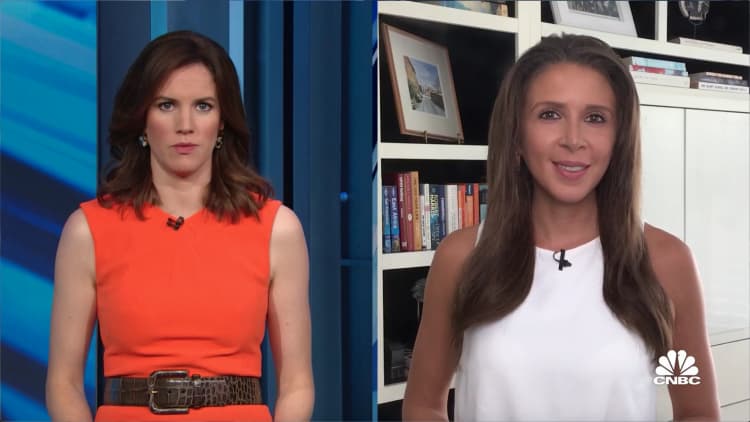 Tourism and presidential popularity solidOn the day the Bitcoin Law took effect, Bukele revealed that the country had begun to add bitcoin to government coffers. Since then, the price of the cryptocurrency has plunged more than 60%, stoked by rising interest rates and failed projects and bankruptcies in the industry.The government has an unrealized paper loss on bitcoin of around $60 million. None of these losses are locked in until the country exits its bitcoin position.In aggregate, the entire experiment and all its associated costs have only set the government back around $375 million, according to estimates. That’s not nothing — especially considering the fact that El Salvador has $7.7 billion of bonds outstanding — but to an economy of $29 billion, it is comparatively small.El Salvador’s millennial, tech-savvy president — who once touted himself as the “world’s coolest dictator” on his Twitter bio — has tethered his political fate to the country’s crypto gamble, so he has a very big incentive to make it work in the long run and to pay off the country’s debt in the interim. Bukele faces reelection for another five-year presidential term in 2024.At least El Salvador’s big bitcoin gamble has been a win in terms of attracting bitcoin tourists.The tourism industry is up 30% since the Bitcoin Law took effect, according to official government estimates. The country’s tourism minister also notes that 60% of tourists now come from the U.S.The bitcoin experiment hasn’t hurt the president’s popularity either. Bukele’s approval ratings are north of 85% — thanks in large part to his tough-on-crime approach to leading. That’s no small thing to a country that was more dangerous per capita than Afghanistan five years ago.Suter said the project has also introduced many locals to the concept of savings, noting that before the Bitcoin Law, much of the population didn’t have a way to digitally hold their money and transact among one another.”It was all cash — and the cash that you earned that week, you typically spent it, because there wasn’t much ability to dream of growing it through investment.”
Tourism and presidential popularity solidOn the day the Bitcoin Law took effect, Bukele revealed that the country had begun to add bitcoin to government coffers. Since then, the price of the cryptocurrency has plunged more than 60%, stoked by rising interest rates and failed projects and bankruptcies in the industry.The government has an unrealized paper loss on bitcoin of around $60 million. None of these losses are locked in until the country exits its bitcoin position.In aggregate, the entire experiment and all its associated costs have only set the government back around $375 million, according to estimates. That’s not nothing — especially considering the fact that El Salvador has $7.7 billion of bonds outstanding — but to an economy of $29 billion, it is comparatively small.El Salvador’s millennial, tech-savvy president — who once touted himself as the “world’s coolest dictator” on his Twitter bio — has tethered his political fate to the country’s crypto gamble, so he has a very big incentive to make it work in the long run and to pay off the country’s debt in the interim. Bukele faces reelection for another five-year presidential term in 2024.At least El Salvador’s big bitcoin gamble has been a win in terms of attracting bitcoin tourists.The tourism industry is up 30% since the Bitcoin Law took effect, according to official government estimates. The country’s tourism minister also notes that 60% of tourists now come from the U.S.The bitcoin experiment hasn’t hurt the president’s popularity either. Bukele’s approval ratings are north of 85% — thanks in large part to his tough-on-crime approach to leading. That’s no small thing to a country that was more dangerous per capita than Afghanistan five years ago.Suter said the project has also introduced many locals to the concept of savings, noting that before the Bitcoin Law, much of the population didn’t have a way to digitally hold their money and transact among one another.”It was all cash — and the cash that you earned that week, you typically spent it, because there wasn’t much ability to dream of growing it through investment.”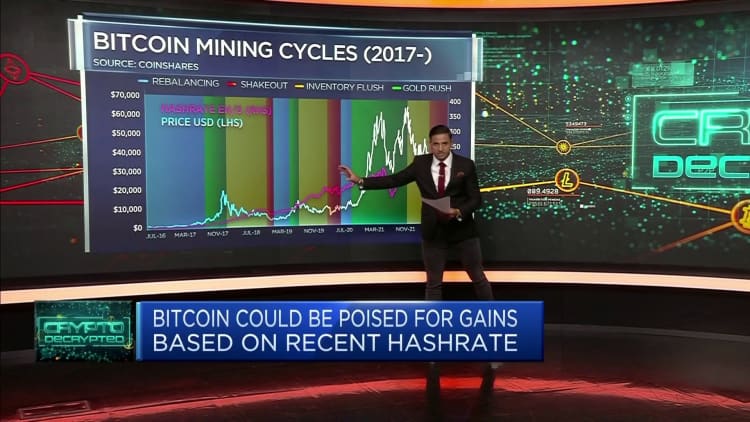 The president upped the ante in November when he announced plans to build a “Bitcoin City” next door to the Conchagua volcano in southeastern El Salvador. The bitcoin-funded city would offer significant tax relief, and geothermal energy rolling off the adjacent volcano would power bitcoin miners.But now, Bitcoin City is on hold, as is the $1 billion bitcoin bond sale, which was initially put on ice in March because of unfavorable market conditions.”Ultimately, El Salvador’s problems are just tangential to currency,” Muci said.”The plane is gonna crash eventually, if they don’t change things,” he said — “if they don’t raise taxes, cut spending, start being much more disciplined, convincing markets that they’re sustainable.””Bitcoin doesn’t solve any of El Salvador’s important economic problems,” he added.
The president upped the ante in November when he announced plans to build a “Bitcoin City” next door to the Conchagua volcano in southeastern El Salvador. The bitcoin-funded city would offer significant tax relief, and geothermal energy rolling off the adjacent volcano would power bitcoin miners.But now, Bitcoin City is on hold, as is the $1 billion bitcoin bond sale, which was initially put on ice in March because of unfavorable market conditions.”Ultimately, El Salvador’s problems are just tangential to currency,” Muci said.”The plane is gonna crash eventually, if they don’t change things,” he said — “if they don’t raise taxes, cut spending, start being much more disciplined, convincing markets that they’re sustainable.””Bitcoin doesn’t solve any of El Salvador’s important economic problems,” he added.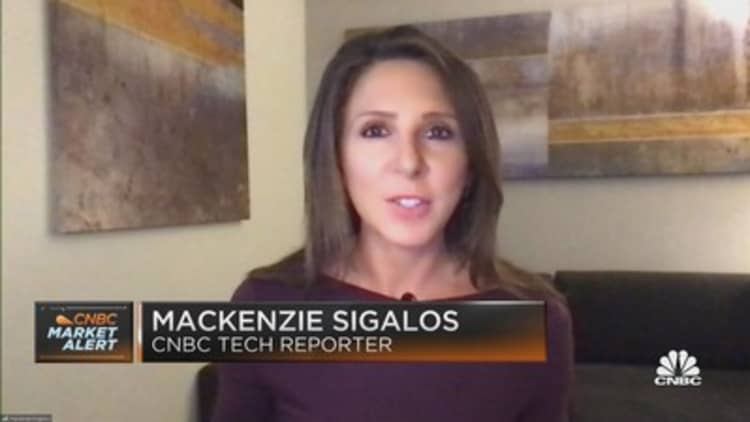 .
.
Microsoft launches Designer, its answer to highly valued startup Canva
Microsoft is launching a simple graphic design app called Designer that will be available for free and as part of Office productivity software subscriptions, the company said Wednesday.The software represents an alternative to Canva, a design app boasting more than 100 million monthly active users. Based in Sydney, Canva is one of the world’s most valuable startups, boasting a $40 billion post-money valuation as of last year. But one of the startup’s investors, Blackbird Ventures, reportedly lowered its valuation of the company to $25.6 billion earlier this year as inflation and recession fears caused software stock prices to tumble.Microsoft has sought to demonstrate the value of Office subscriptions by adding new capabilities, and earlier this year it raised the prices of some bundles aimed at businesses. Office controls the market, and companies are constantly attempting to topple the leader in the category. The closest competitor is Google. On Tuesday Google Cloud CEO Thomas Kurian said Workspace had more than 8 million paying subscribers, up from over 6 million as of April 2020.Increasingly, Canva is going after core parts of Office. It introduced an alternative to the PowerPoint slide development program in 2021, and in September it brought out a tool to edit documents, challenging Word. Canva says it has 55,000 paid teams using its software including at Amazon, FedEx, PepsiCo, Pfizer and Salesforce.With its Designer app, Microsoft is initially aiming at consumers, a spokesperson told CNBC in an email. But the application could also prove useful to workers inside of companies, government agencies and schools, where Microsoft has a larger base of users. Microsoft could expand Designer to additional markets, including enterprises, if it perceives sufficient interest, the spokesperson said.In the current economy, some companies have sought to save money by reducing the number of software providers they count on, and adding Designer to commercial Office subscriptions at some point might help companies cut out payments to Canva, for one.”No company is better positioned than Microsoft to help organizations deliver on their digital imperative so that they can do more with less,” as Microsoft CEO Satya Nadella said on a conference call with analysts in July.The launch of Designer might also make Microsoft bump up against Adobe, which fields the free Adobe Express tool that features templates and stock images. Canva is “where beginners get started before they come to Adobe,” Jonathan Vaas, Adobe’s vice president of investor relations, said at a Bank of America event in January.But Microsoft has a close partnership with Adobe, and the two companies have more than 30 product integrations. “Adobe remains our key, at-scale strategic partner and this new consumer design application does not change our engagement with Adobe in any way,” a Microsoft spokesperson told CNBC in an email.People can draw on templates to come up with social media posts in Designer, Liat Ben-Zur, a Microsoft corporate vice president, wrote in a blog post. Social media is also probably the most popular medium for which people design in Canva, said Cliff Obrecht, the startup’s co-founder and operating chief, in an interview last month. But Obrecht said Canva is “not competing against Microsoft.” Its primary competitor is Adobe, he said.Designer can automatically come with visual designs when people enter text, thanks to an integration with DALL-E 2 artificial intelligence software from Microsoft-backed startup OpenAI. The two companies don’t want Designer to surface inappropriate content. OpenAI took out the most explicit sexual and violent content from AI training data for the system, while Microsoft recently implemented a change that helps to generate more diverse results, Ben-Zur wrote.For now, people can join a waiting list for the free preview of Designer online. Once the app becomes generally available, Microsoft will maintain a free tier, along with a premium version for those with Microsoft 365 Personal and Microsoft 365 Family subscriptions, the spokesperson said.WATCH: Two-minute drill: MSFT, UPS & PXD .
Activist Jana prepares to bring star nominees to Freshpet’s board. Here’s how it may create value
Inti St Clair | Tetra Images | Getty ImagesCompany: Freshpet (FRPT)Business: Freshpet manufactures and markets natural fresh meals and treats for dogs and cats in the United States, Canada and Europe. The company sells its products under the Freshpet brand, along with Dognation and Dog Joy labels through various classes of retail, including grocery, mass, club, pet specialty and natural, as well as online.Stock Market Value: $2.3B ($50.09 per share)Activist: Jana PartnersPercentage Ownership: 9.89%Average Cost: $42.76Activist Commentary: Jana is a very experienced activist investor founded in 2001 by Barry Rosenstein. They made their name taking deeply researched activist positions with well-conceived plans for long-term value. Barry Rosenstein called his activist strategy “V cubed.” The three Vs were” (i) value: buying at the right price; (ii) votes: knowing whether you have the votes before commencing a proxy fight; and (iii) variety of ways to win: having more than one strategy to enhance value and exit an investment. Since 2008, they have gradually shifted that strategy to one which we characterize as “the three Ss” (i) stock price – buying at the right price; (ii) strategic activism – sale of company or spinoff of a business; and (iii) star advisors/nominees – aligning with top industry executives to advise them and take board seats if necessary. Jana has extensive experience in this industry, with a successful track record in the consumer retail space and their involvement has led to sales of Pinnacle Foods, PetSmart, Safeway, Whole Foods and ConAgra’s spinoff of its Lamb Weston business.What’s Happening?Jana entered into nomination agreements, pursuant to which the following six nominees have agreed to become members of a potential Jana director slate for election at Freshpet’s 2023 annual meeting: (i) Diane Dietz, an investor and advisor in the consumer and retail sector who served as president and CEO of Rodan & Fields, LLC, a premium skincare brand, and CMO of Safeway, Inc., a food and drug retailer; (ii) James Lillie, a private investor who previously served as CEO of Jarden Corporation, a consumer products company; (iii) Timothy R. McLevish, managing partner of Strategic Advisory Partners LLC — he also previously served as CFO of Kraft Foods Inc. and Kraft Foods Group, CFO of Carrier Global Corporation, an HVAC manufacturing company, and CFO at Walgreens Boots Alliance — (iv) Dwyane Wade, CEO of Wade Enterprises, Inc., an owner of the Utah Jazz of the National Basketball Association, and founder of Wade Cellars who was previously a professional basketball player for 16 years in the NBA; (v) Carsten Charles (“CC”) Sabathia, Jr., special assistant to the MLB commissioner, board vice president of The Players Alliance and host of R2C2 podcast, who was previously a professional pitcher for 19 years in the MLB; and (vi) Ginger Gorden, CEO of the GD Group, Inc., a business management services company. Additionally, Jana announced that it intends to have discussions with Freshpet’s board and management team regarding (a) evaluating the company’s strategic value in a sale, capitalizing on interest in the category from significantly larger players with lower costs of capital, strong operational capabilities, global footprints and greater scale; (b) capital allocation, including Freshpet’s capacity expansion initiatives; (c) operations, fill rates, costs, free cash flow, brand building and margin execution; (d) investor communication; (e) management; (f) management compensation and incentives; and (g) board composition and governance matters.Behind the ScenesFreshpet is a manufacturer of fresh food for dogs and cats. It has a great product in an attractive growing market, with huge distribution and exclusivity deals which are hard to replicate. The company owns 27,000 Freshpet refrigerators throughout grocery and specialty stores. These are refrigerators that Freshpet buys, maintains and stocks, which is a win-win for the company and the retailer. The company benefits because it gives them a huge moat to their business and a competitive advantage over peers. Retailers love it because it does not take up any of their existing refrigerator space and because customers buying fresh pet food are less likely to stock up on the product, which takes up refrigerator space, and pulls the customer back to the store sooner.Since late April 2021, Freshpet’s stock has declined from about $184 per share to roughly $45 per share in late September, while revenue has increased from $425 million to over $500 million in the past year and is continuing to grow. The problem is not the top line. The problem is that the business has quickly scaled to a point where the capabilities of the management team are not sufficient for the challenge. We see this frequently in activist campaigns, such as Chipotle. This has led to issues like a 70% fill rate on customer orders, where well-run peers generally operate at a 95% to 100% fill rate.The first opportunity for value creation here is to moderate Freshpet’s expansion plans and get the supply chain right. Without this, the company could end up using all of its cash and balance sheet capacity to fund its expansion. It has already done three equity offerings to fund its growth. These operational issues are fixable but that would require a reconstituted board and management team that is focused on efficiently growing the business. Unfortunately, senior management does not seem to be well positioned, or focused, on growing the business to maximize shareholder value. Freshpet’s chairman, Charles Norris, has served on the board for about 16 years. Although the company brought in a new CEO in 2016, the co-founder, Scott Morris, still holds the title of president and COO. If you want to know how focused he is on the company, all you need to know is that in 2020 he co-founded a new company, Hive Brands, while presumably working full time as president and COO of Freshpet. Shockingly, the board had no issue with this.The other opportunity to create shareholder value, is a sale of the company. Pet and Baby products are two of the most attractive categories among consumer packaged goods (“CPGs”) businesses, which is a consolidating space as these businesses are notoriously difficult to grow organically. There would likely be significant interest in Freshpet from larger CPGs that already have a pet food business or CPGs that want to start a pet food business. These larger companies already have the management team and infrastructure capable of managing almost any rate of growth with 95%+ fill rates. This would be the much easier option with less time and uncertainty and is something the company should definitely explore. In this regard, this is very similar to Jana’s 2017 campaign at Whole Foods, which had similar problems and dynamics to Freshpet and was quickly sold to Amazon. Achieving either of these value creation opportunities will depend on Jana’s ability to either amicably or forcibly get board seats.Like in many of its past activist situations, Jana has teamed up with an all-star group of operators to assist in developing its thesis, consult with and, if need be, potentially be board nominees. The six individuals who have agreed to be potential Jana director nominees at the 2023 annual meeting include former CEOs, CFOs and CMOs of large public companies and two individuals who we are more used to seeing on a court or a field than a boardroom: Dwyane Wade, formerly of the Miami Heat, and CC Sabathia, formerly of the New York Yankees. While Wade and Sabathia might not have obvious relevant experience like former public company executives, Wade does have entrepreneurial experience as the founder of Wade Cellars, and they both have extensive experience growing their own brands. Moreover, to achieve what they have in sports requires an extreme level of work ethic and focus: two things the company seems to desperately need along with diversity of experience and perspective as the board is 90% white and 70% male. Although Jana has agreements with six potential nominees, there are only four seats up for election next year so likely room for only three of these six, as Jana historically includes one of their own executives on board slates. Accordingly, the slate that makes the most sense would be a Jana nominee, two former executives and either Wade or Sabathia.Freshpet’s 2022 annual shareholders meeting is on Oct. 3, so Jana will not have the opportunity to nominate directors this year. But at next year’s October meeting, the company’s long-tenured chairman Norris and the CEO William Cyr are both up for election. If they get replaced, there will be a real power shift at the company, not to mention a shareholder mandate for change. Moreover, there is a high likelihood that this shareholder base will support Jana based on the severe underperformance of Freshpet. Many large shareholders, including those who bought in the May 2022 stock offering at $81 per share, are well under water on their investment and would likely support Jana. These same shareholders would also likely support a sale of the company at a 40% premium despite that being far below the 2021 highs of roughly $184 per share. Unlike many similarly situated companies, there might not be too much resistance from management to a sale. The president/co-founder has one foot out the door with the launch of his new company. The chairman is up for election next year and would presumably rather leave by selling the company than by getting voted off the board. Finally, the CEO, who is also up for election next year, would have similar motivation, in addition to a likely large payday on a sale.Ken Squire is the founder and president of 13D Monitor, an institutional research service on shareholder activism, and he is the founder and portfolio manager of the 13D Activist Fund, a mutual fund that invests in a portfolio of activist 13D investments. Freshpet is a holding in the fund. Squire is also the creator of the AESG™ investment category, an activist investment style focused on improving ESG practices of portfolio companies. .

